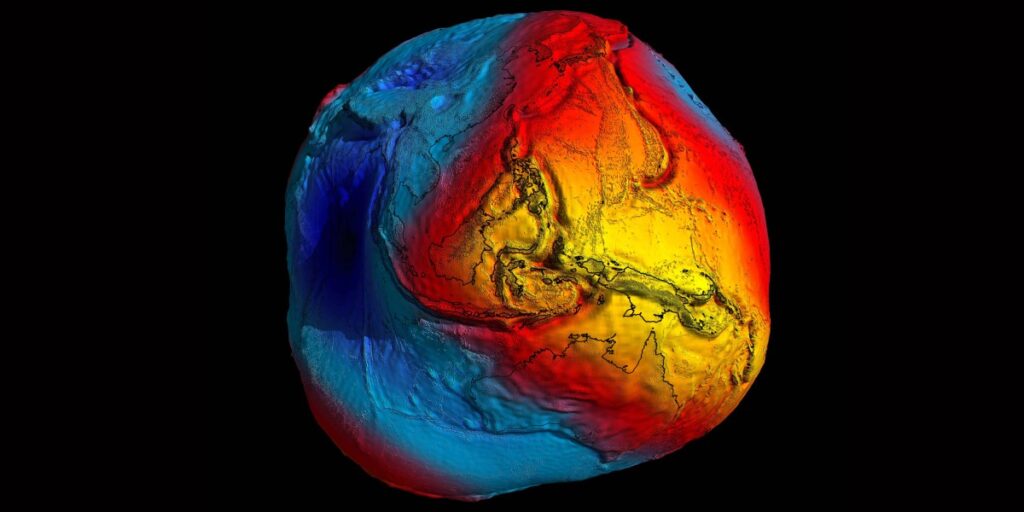To prevent such costly construction errors, in 2015 scientists in the International Association of Geodesy voted to adopt the International Height Reference Frame, or IHRF, a worldwide standard for elevation. It’s the third-dimensional counterpart to latitude and longitude, says Sanchez, who helps coordinate the standardization effort.
Now, a decade after its adoption, geodesists are looking to update the standard—by using the most precise clock ever to fly in space.
That clock, called the Atomic Clock Ensemble in Space, or ACES, launched into orbit from Florida last month, bound for the International Space Station. ACES, which was built by the European Space Agency, consists of two connected atomic clocks, one containing cesium atoms and the other containing hydrogen, combined to produce a single set of ticks with higher precision than either clock alone.
Pendulum clocks are only accurate to about a second per day, as the rate at which a pendulum swings can vary with humidity, temperature, and the weight of extra dust. Atomic clocks in current GPS satellites will lose or gain a second on average every 3,000 years. ACES, on the other hand, “will not lose or gain a second in 300 million years,” says Luigi Cacciapuoti, an ESA physicist who helped build and launch the device. (In 2022, China installed a potentially stabler clock on its space station, but the Chinese government has not publicly shared the clock’s performance after launch, according to Cacciapuoti.)
From space, ACES will link to some of the most accurate clocks on Earth to create a synchronized clock network, which will support its main purpose: to perform tests of fundamental physics.
But it’s of special interest for geodesists because it can be used to make gravitational measurements that will help establish a more precise zero point from which to measure elevation across the world.
Alignment over this “zero point” (basically where you stick the end of the tape measure to measure elevation) is important for international collaboration. It makes it easier, for example, to monitor and compare sea-level changes around the world. It is especially useful for building infrastructure involving flowing water, such as dams and canals. In 2020, the international height standard even resolved a long-standing dispute between China and Nepal over Mount Everest’s height. For years, China said the mountain was 8,844.43 meters; Nepal measured it at 8,848. Using the IHRF, the two countries finally agreed that the mountain was 8,848.86 meters.
A worker performs tests on ACES at a cleanroom at the Kennedy Space Center in Florida.
ESA-T. PEIGNIER
To create a standard zero point, geodesists create a model of Earth known as a geoid. Every point on the surface of this lumpy, potato-shaped model experiences the same gravity, which means that if you dug a canal at the height of the geoid, the water within the canal would be level and would not flow. Distance from the geoid establishes a global system for altitude.
